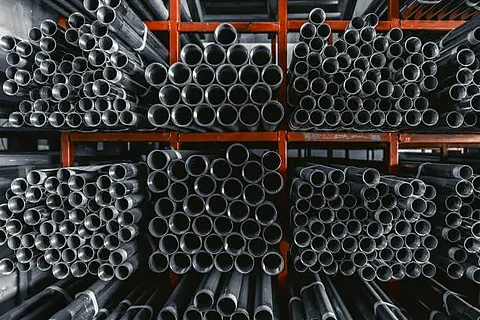

India has lodged a formal dispute with the World Trade Organization (WTO) over US tariffs on steel and aluminium—an unexpected move that analysts interpret as a calculated assertion against unilateral trade actions, even as New Delhi appears keen to secure a broader trade deal with Washington.
The timing of the complaint, filed just days before Commerce Minister Piyush Goyal’s scheduled visit to the United States for high-level trade talks, suggests a dual-track strategy. New Delhi has been preparing to reduce the average tariff differential with the US from 13 percent to below 4 percent—an apparent gesture aimed at unblocking stalled negotiations.
Analysts said the WTO move reflects India’s commitment to defending its trade interests through multilateral forums while steering clear of direct retaliatory escalation.
“We are not looking for a bilateral escalation of trade tariffs, but we are looking after our own interests,” a trade expert at the Observer Research Foundation said.
Earlier this year, the US imposed a 25 percent duty on all steel and aluminium imports, part of President Trump’s wider effort to reshape America’s global trade relationships. In April, India had requested consultations with Washington under WTO rules, but the US declined, citing national security grounds and insisting the tariffs were not safeguard measures.
India, however, told the WTO that the US actions did amount to safeguard measures—trade restrictions intended to protect domestic industries—and would negatively affect Indian exports. In a formal notification on Monday, Delhi reserved the right to “suspend concessions or other obligations” under WTO rules in response to the US duties.
The US tariffs are estimated to affect $7.6 billion worth of Indian exports, with duty collections nearing $2 billion.
The expert noted that any counter-duties imposed by India would effectively offset the revenue the US has collected under the tariffs.
India previously imposed retaliatory tariffs on 28 US products in 2019 and challenged Washington at the WTO over the withdrawal of trade concessions worth $5.7 billion.
A trade expert in New Delhi urged caution in interpreting the WTO move as a sign of deteriorating bilateral ties. “India is making a strong statement that we will not junk the WTO process,” he said, adding that as a founding member of the multilateral system, India has an obligation to uphold it.
“What the US has done on steel and aluminium is a protectionist move against WTO safeguards, and we are invoking our rights,” he added.
Despite its intent, the effectiveness of India’s WTO challenge remains in question. The organisation’s dispute settlement mechanism has been largely paralysed due to the lack of appointed judges to its appellate body.
“This is an act of symbolism,” said Biswajit Dhar, an expert at the Council for Social Development in New Delhi. “The WTO is virtually dead, but by protesting before it, we are showing that we are standing up. It is welcome because this is what we need to do.”
The development comes shortly after the US agreed to significantly roll back tariffs on Chinese imports, following a prolonged tit-for-tat trade war that had threatened to tip the global economy into recession.
Dhar argued that India should have taken a more assertive trade stance earlier, especially in light of its projected rise to become the world’s third-largest economy by 2031, according to S&P Global. “We have a vast market and should negotiate on that basis,” he said. “We understand Trump wants to speak to his domestic base, but if you play hardball, you must be ready to pay the price.”
He added that India must now play its cards more like China—firmly and from a position of strength.
Since Prime Minister Narendra Modi’s visit to Washington in February, India has been pushing for a trade agreement with the US. At the time, both Modi and Trump announced plans to quadruple bilateral trade to $500 billion by 2030.